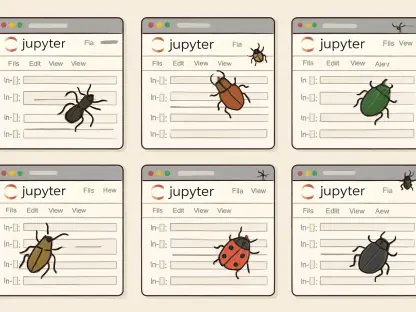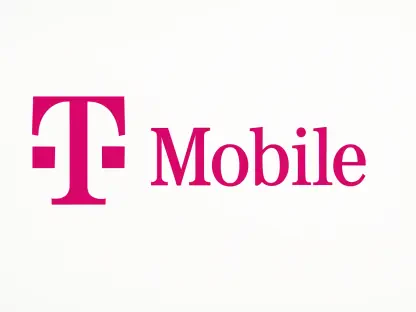In an era where digital distractions are nearly impossible to escape, e-ink tablets have emerged as a compelling solution for those seeking a more focused and eye-friendly way to read, write, and work. These devices, with their paper-like displays, offer a stark contrast to the glare and overstimulation of traditional LCD tablets, providing a sanctuary for students, professionals, and avid readers alike. Initially brought into the spotlight by e-readers like the Amazon Kindle, e-ink technology has evolved significantly, transforming into versatile productivity tools that cater to a wide range of needs. Unlike their flashy counterparts, e-ink tablets prioritize comfort and concentration, minimizing eye strain during long sessions and creating an environment conducive to deep focus. This article explores the unique advantages of e-ink tablets, delving into why they might be the ideal choice for enhancing both reading enjoyment and work efficiency. By examining their standout features and spotlighting top models on the market, the goal is to guide readers toward finding a device that perfectly aligns with their specific goals, whether that’s immersing in novels without screen fatigue or crafting detailed notes in a distraction-free space. The journey through the world of e-ink tablets reveals not just a niche technology, but a growing movement toward mindful digital interaction.
Unpacking the Appeal of E-Ink Technology
E-ink tablets stand apart from conventional devices due to their unique display technology, which relies on ambient light or subtle edge lighting rather than the harsh backlighting found in LCD or OLED screens. This fundamental difference means the screen only refreshes when content changes, such as flipping a page in a book, drastically reducing eye strain during extended use. For individuals who spend hours reading or writing, this can make a significant difference in comfort, positioning e-ink tablets as a go-to option for sustained focus. The absence of flickering or intense light also mimics the experience of reading printed material, offering a gentler visual experience that feels more natural over time. This technology is particularly beneficial for those prone to digital fatigue, as it sidesteps many of the discomforts associated with prolonged exposure to standard screens.
Beyond the physical benefits, e-ink tablets are engineered to enhance productivity by curbing distractions. Their slower refresh rates and limited display capabilities make them less suitable for dynamic content like videos or fast-paced games, which in turn discourages mindless browsing or social media scrolling. This inherent limitation becomes a strength, as it nudges users toward core tasks like reading, annotating, or drafting ideas without the constant pull of notifications. For students and professionals, this creates a digital workspace that feels intentional, allowing for deeper engagement with material. The design philosophy behind e-ink tablets reflects a deliberate shift away from the sensory overload of mainstream tech, catering to those who value clarity and purpose in their digital interactions.
Defining Features That Elevate E-Ink Tablets
One of the most notable aspects of e-ink tablets is the range of screen sizes available, accommodating diverse user preferences and use cases. From compact 7-inch displays ideal for on-the-go reading to expansive 13.3-inch screens that replicate the feel of a full sheet of paper, there’s a size for every need. Smaller devices suit commuters or casual readers who prioritize portability, slipping easily into a bag for quick access during travel. Larger screens, on the other hand, appeal to professionals and students who require ample space for detailed note-taking or reviewing documents. This flexibility ensures that whether the focus is leisure or intensive work, the physical dimensions of the tablet can match the intended purpose, enhancing the overall experience.
Another transformative feature is the advanced stylus technology integrated into many e-ink tablets, which brings a tactile, pen-on-paper feel to digital writing. Systems like Wacom EMR provide a natural, battery-free writing experience, allowing for precise handwriting and sketching without the need for constant recharging. This is a significant draw for creatives and note-takers who rely on fluid, intuitive input for brainstorming or annotating. The textured screens often paired with these styluses further amplify the realism, creating friction that mirrors traditional writing surfaces. For users who find typing impersonal or cumbersome, this feature bridges the gap between analog satisfaction and digital convenience, making e-ink tablets a unique hybrid tool in the tech landscape.
Color e-ink displays represent an emerging innovation, though they don’t yet match the vibrancy of LCD screens—often described as resembling muted newsprint. Despite this, they add meaningful functionality for viewing illustrations, color-coded notes, or even web content with a bit more depth. While monochrome displays remain the standard for crisp text and cost-effectiveness, color options are gaining traction among users who want a slightly broader visual palette without sacrificing the core benefits of e-ink. This development hints at the technology’s potential to evolve, catering to more diverse tasks while maintaining its signature focus on eye comfort and simplicity. As color capabilities improve, they could open new doors for educational and professional applications, further expanding the appeal of these devices.
Spotlight on Leading E-Ink Tablets for Diverse Users
Among the top contenders in the e-ink market, the Boox Tab X C and Boox Note Max stand out as exceptional all-around performers, offering unique features tailored to different user needs. The Tab X C features a 13.3-inch color display with impressive clarity, making it suitable for multitasking, browsing, and even light typing tasks. In contrast, the Note Max offers a monochrome experience optimized for note-taking, with a textured screen that enhances the writing feel. Both devices run on a full Android operating system with robust processors, providing versatility that rivals traditional laptops. Their large, A4-sized displays make them ideal for users who need a comprehensive digital workspace, blending productivity with the benefits of e-ink technology. These tablets cater to professionals and students seeking a powerful, distraction-free tool that adapts to a variety of workflows.
For students, the Viwoods AI Paper emerges as a tailored solution with its 10.7-inch display and innovative AI-driven features, making it an ideal tool for academic success. This tablet goes beyond basic functionality by offering tools like text summarization and research assistance, integrating seamlessly with platforms such as Google Drive and advanced language models. Its lightweight design and bright, clear screen make it a practical companion for academic environments, while features like searchable handwritten notes elevate its utility for study and organization. This device transforms into a digital research assistant, streamlining complex tasks and syncing effortlessly with productivity apps. It’s a clear choice for learners who need a smart, focused device to support their educational journey without unnecessary digital clutter.
When color and portability are priorities, the Boox Note Air 4C delivers with a 10.3-inch color display and a textured surface for premium handwriting quality. Supporting Wacom EMR stylus technology, it offers an excellent writing experience, ideal for note-taking or sketching on the go. Its ability to handle graphic novels with color depth adds to its versatility, while full Android compatibility ensures access to a wide range of apps. Though minor ghosting in animated content and an awkwardly placed charging port are slight drawbacks, its outdoor readability and compact form factor make it a strong contender. This tablet suits users who want a balance of advanced features and mobility, especially for visual content or creative tasks.
Tailored Options for Specific Needs
Casual readers deeply embedded in Amazon’s ecosystem will find the Kindle Colorsoft an appealing, straightforward choice for their reading needs. With a 7-inch color display that brings book covers and illustrations to life, this device focuses purely on reading, offering long battery life and seamless access to a vast library. While it lacks the broader functionality of other tablets, its simplicity and cost-effectiveness make it perfect for those who prioritize e-books over productivity tasks. Integration with Kindle Unlimited further enhances its value for avid readers, though its closed system limits external content without additional tools. This tablet is best suited for individuals seeking an uncomplicated, eye-friendly reading experience without the bells and whistles of more complex devices.
For those who value structured note-taking, the Ratta Supernote Manta offers a 10.7-inch display and a unique note-linking system that fosters interconnected thinking. Often described as a “second brain,” it allows users to build deep connections between ideas, documents, and media, supported by a soft, gel pen-like writing surface. A dedicated art app also caters to detailed sketching, appealing to creatives and planners. While the absence of third-party app support might restrict some users, its elegant design and focus on organization make it a standout. This tablet is ideal for thinkers and artists who want a sophisticated digital notebook without the distractions of a broader operating system, emphasizing depth over breadth.
The Remarkable Paper Pro, with its 11.8-inch color display, positions itself as the ultimate replacement for physical paper, delivering a premium writing experience that captivates users seeking a digital alternative. Its minimalist design, free of third-party apps or web browsing, ensures an undistracted focus on writing and limited reading tasks. Subtle software enhancements for handwriting and vibrant color rendering for PDFs add to its appeal, while a luxurious metallic build elevates the tactile experience. However, its closed ecosystem may feel restrictive for users needing versatility. This device targets those who seek a pure, paper-like tool for jotting down thoughts or reviewing documents, prioritizing simplicity and craftsmanship over digital flexibility.
Navigating the Decision-Making Process
Selecting the right e-ink tablet begins with a clear understanding of your primary needs, whether the focus is on immersive reading, detailed note-taking, or a combination of both. Identifying the core purpose helps narrow down options significantly, as some devices excel in simplicity for e-books, while others offer robust app support for productivity. For instance, Android-based tablets provide access to the Google Play Store, enabling customization, whereas closed systems emphasize a distraction-free zone by limiting external features. This initial step of aligning intent with device capabilities ensures that the chosen tablet complements daily routines, enhancing efficiency without introducing unnecessary complexity or unused functions.
Screen size plays a pivotal role in usability and should be considered carefully based on lifestyle and work habits. Smaller displays, ranging from 7 to 10 inches, offer portability, fitting easily into bags for travel or casual use, which suits readers on the move. Larger screens, between 11 and 13 inches, provide a spacious canvas for detailed annotations or professional document handling, catering to those who treat their tablet as a primary workspace. Resolution is equally important, with a benchmark of at least 300 PPI ensuring sharp text and images, critical for long reading sessions or intricate visuals. Balancing these factors—size for practicality and clarity for comfort—helps pinpoint a device that feels intuitive and supportive in real-world scenarios.
Stylus compatibility and operating system are additional factors to evaluate when making a choice. For users who rely on handwriting or sketching, a tablet with Wacom EMR support offers a seamless, natural feel, often without the hassle of battery management for the pen. Checking whether a stylus is included or sold separately can also impact budgeting. Meanwhile, the operating system determines flexibility—full Android systems allow for app downloads and personalization, ideal for multitaskers, while restricted platforms prioritize focus by limiting extras. These considerations, alongside user reviews for insights on performance issues like lag or battery life, form a comprehensive framework for selecting a tablet that truly fits individual workflows and preferences.
Weighing the Limitations of E-Ink Devices
Despite their many strengths, e-ink tablets come with inherent constraints that potential buyers should acknowledge, especially when considering their functionality compared to traditional tablets. Their slower refresh rates render them impractical for dynamic content such as streaming videos or playing fast-paced games, setting clear boundaries on their role. This limitation, while beneficial for curbing distractions, means they cannot fully replace multifunctional devices for users who need a single gadget for all purposes. Those expecting a seamless experience with animated or interactive apps may find the technology lacking, as it prioritizes static content like text and simple images over fluid motion, reflecting its specialized design.
Cost presents another significant consideration, as e-ink tablets often carry a steeper price tag due to their niche market and smaller production scale. Unlike mass-produced LCD tablets, these devices cater to a specific audience, which can drive up manufacturing expenses and, consequently, retail prices. This makes them less accessible for budget-conscious individuals, especially when comparable mainstream alternatives offer broader functionality at a lower cost. While some entry-level options exist, premium features like color displays or advanced stylus support typically come at a higher investment, requiring users to weigh the unique benefits against financial practicality when deciding to commit.
Performance inconsistencies across different models also warrant attention, as not all e-ink tablets deliver the same level of smoothness or reliability. Issues like ghosting, where faint traces of previous content linger on the screen, can disrupt readability, while some devices may exhibit slight delays when navigating apps or menus. These quirks vary widely depending on hardware and software optimization, making it essential to consult user feedback for a realistic picture of day-to-day use. Battery life, update frequency, and build durability are additional factors often highlighted in reviews, offering a deeper understanding of long-term value. Acknowledging these trade-offs ensures expectations align with the technology’s current capabilities, avoiding disappointment after purchase.
The Evolving Role of E-Ink in Modern Tech
E-ink tablets symbolize a subtle pushback against the relentless pace and sensory overload of contemporary technology, carving out a space for deliberate, mindful interaction. By stripping away the constant buzz of notifications and the allure of entertainment apps, they cater to users who yearn for a digital experience that feels more grounded and intentional. This appeal spans a wide demographic, from students seeking focused study tools to professionals aiming to streamline workflows without digital noise. The technology’s emphasis on simplicity and eye comfort resonates in an age where screen time is often synonymous with fatigue, positioning e-ink as a refreshing counterpoint to the norm.
The diversity within the e-ink market is a testament to its growing relevance, with devices ranging from minimalist paper substitutes to feature-rich productivity hubs. This spectrum ensures that whether the need is for a basic e-reader or a sophisticated note-taking platform with AI integration, there’s a suitable option available. Manufacturers continue to innovate, pushing boundaries with color displays and advanced software, hinting at a future where e-ink could bridge even more gaps in digital utility. As these advancements unfold, the technology seems poised to redefine how reading and work are approached, offering tools that prioritize depth over distraction in an increasingly connected world.
Looking back, the exploration of e-ink tablets revealed a landscape rich with specialized solutions, each addressing unique user needs with precision. Devices like the Boox series impressed with their versatility, while others, such as the Remarkable Paper Pro, honed in on pure, undistracted writing. Moving forward, potential buyers are encouraged to reflect on specific priorities—be it screen size, stylus quality, or app support—and match them to a tablet’s strengths. Consulting detailed user experiences can further illuminate practical performance, guiding informed decisions. As the e-ink niche continues to expand, staying attuned to emerging models and features could uncover even better fits for enhancing both reading pleasure and productivity in the years ahead.









